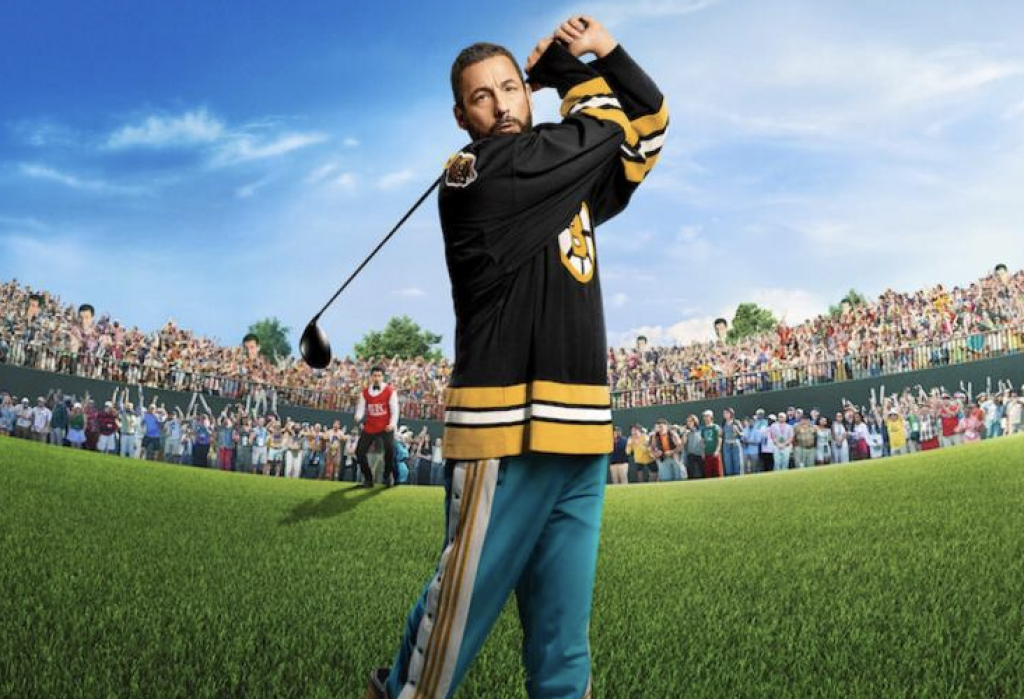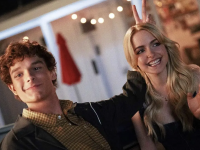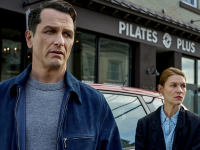Happy Gilmore 2 has finally been released on Netflix nearly 30 years after the cult favourite in 1996. Will the film be a hole in one, or has this streaming-only sequel landed in the rough?
The new movie written by Adam Sandler focuses heavily on fan service and bringing back the feeling and jokes from the first movie but also tries to give it a deeper story. In this sequel, Happy (Adam Sandler) is now a single, alcoholic ex-golfer who decides to return to the golf range to fund his daughters ballet schooling in Paris. You get the training montage iconic to every sports movie fuelled with countless gags and jokes. When he gets back into the swing of it he is haunted by depression and is thrust back into a wild adventure to save the sport he loves from a new up and coming sports league. He must over come his demons and get back into the sport that brought him fame decades before. The story balances tragic backstory (including a shocking accidental death) with the absurd slapstick comedy and the jokes that made the first movie a fan favourite.
The movie brings back the vast majority of the cast from the first Happy Gilmore, including Christopher McDonald as Shooter McGavin and Ben Stiller reprising his role as additional comedic relief. Alongside the fan favourites, the sequel is also a star studded affair with a roster of noticeable faces joining the mix such as music stars Eminem and Post Malone and sports stars Rory McIlroy and Travis Kelce amongst many others.
The film walks a line between nostalgic throwbacks and modern absurdity. Where the original Happy Gilmore was a rage-fuelled underdog comedy centred primarily on sports absurdity, the sequel tries to injects a more mature (but still very chaotic) tone. It explores themes of grief, legacy, and parental pressures whilst still trying to make you laugh for the majority of the film. In this sequel, Happy’s main rivalry is with his self and addiction following the loss of his wife. This shift in tone gives way in heartfelt scenes of hitting rock bottom and longing to do right by his children.
The change of tone gives the sequel more emotional grounding, without fully abandoning its comedic roots. The balance of outlandish golf stunts, trash talk, and cameos seems a bit rough against the back drop of the core emotional plot line but on the whole does add a lot more to the happy Gilmore story.
The writing relies very heavily on jokes from the original, without much push to make its own mark as a great comedy. A lot of the main funny scenes are almost exact copiers from the first movie and due to this some jokes are a bit hit or miss but there wasn’t any real stand out jokes or scenes that made this movie its own.
Despite my aversion to the way they have blended the comedy and story aspects, Happy Gilmore 2 isn’t just a lazy cash grab to follow a cult hit. It’s a riskier, more self-aware sequel that tries to say something about growing old, screwing up, and still swinging.
The chaotic charm of the original is still present, but diluted. Where the sequel has reused old jokes it adds layers of introspection. The simplest way to break down the movie is that, if you loved the first film for its unhinged golf comedy, this one gives you that and if you wanted a more in depth story this also gives you that but perhaps with less polish than it needed. It is 100% a great choice to watch on a lazy Sunday if you’re wanting an easy watch.
Author: Mike, Web Aftersales







